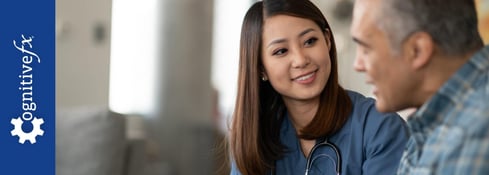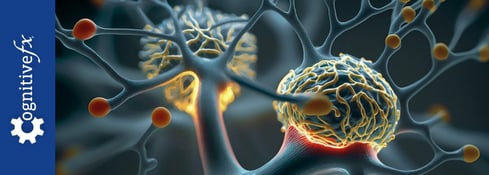What to Know About Combining Antidepressants & TMS Therapy
Patients considering transcranial magnetic stimulation (TMS) often wonder whether or not they can continue taking their antidepressant medication while undergoing TMS treatment.


After approval by the U.S. Food and Drug Administration (FDA) in 2019, ketamine has become increasingly popular as an alternative treatment for depression. This is largely thanks to forms of ketamine that can be administered in different ways, including oral, nasal spray, intravenous (ketamine infusion), and intramuscular.
While ketamine may be an effective depression treatment for some, it may not work for others or may stop working at some point. There is limited data on ketamine’s long-term safety and effectiveness for depression. It’s also common for patients to experience uncomfortable dissociative symptoms, hypertension, and other side effects for a few hours after administration.
In this article, we look at potential reasons why ketamine might not be working for you. We also discuss the latest form of transcranial magnetic stimulation (TMS)—which is more effective and safer than ketamine—as an alternative to consider.
Below, we cover:
Note: While ketamine can also be used off-label to treat other mood disorders, schizophrenia, post-traumatic stress disorder (PTSD), suicidal thoughts, and substance use disorder, this article focuses specifically on ketamine for depression.
Use of ketamine can be effective in treating depression when other options have failed. However, about 30% of the patients undergoing treatment are non-responders, in which this medication fails to work or stops working after some time.
Some of the potential causes for failure include:
The current protocol to administer ketamine typically involves repeated doses ranging from 0.1 to 0.5 mg/kg over 40 minutes, 2 to 3 times per week, for 4 to 6 total sessions. These values are followed mostly by default only because they’re the most common range studied, but they may not be the optimal dosage for every patient.
Different forms of ketamine have varied levels of effectiveness. For example, oral and nasal (esketamine; brand name: Spravato) ketamine are less effective and more unpredictable than intravenous forms, which may cause patients to feel their treatment isn’t working.
This is because oral and nasal ketamine have 20% and 40% bioavailability, respectively. This means that patients need much higher doses to have an effect compared to intravenous ketamine, which is 100% bioavailable. In addition, finding the optimal dose for oral and nasal forms can be somewhat of a guessing game, while it’s easier to find the right dose with intravenous ketamine to maximize the benefits.
Ketamine therapy may also not work as expected if patients are taking medication for other conditions. Some medications have the potential to reduce the effectiveness of ketamine, including benzodiazepines such as Xanax and Lamotrigine (Lamictal).
Taking these medications does not necessarily exclude patients from taking ketamine, but it does require a specific plan with your healthcare provider to avoid any problems.
Patients using ketamine over a prolonged period may notice that the impact of ketamine diminishes over time. This is a sign that their body is building tolerance to ketamine. This is one of the reasons why patients should be closely monitored. Your healthcare provider can be on the lookout for signs of tolerance and adjust treatment as needed.
Missing ketamine doses can have serious effects. Not only will symptoms of depression return, but some patients may also experience withdrawal symptoms, such as mood swings, insomnia, nausea, and shakes.
Often, patients expect ketamine’s results to be immediate. This is understandable, but unrealistic in many cases.
Ketamine triggers a phenomenon in the brain called neuroplasticity, which increases the brain's ability to change, reorganize, and form new neural connections. However, this process takes days or even weeks to be noticeable, and is different for each patient.
Some people feel the benefit of ketamine after just one or two sessions, while others may need more until they feel better.
Mixing ketamine and recreational drugs or alcohol can be extremely dangerous. When taken together, patients don’t feel any benefits from the ketamine and experience worsened signs of intoxication, such as impaired motor function, slow breathing, and, in serious cases, respiratory depression.
If ketamine is not working for you, it could be because you have an undiagnosed medical condition, including thyroid disease, diabetes, or vitamin deficiencies. Our advice is to talk to your clinician to get a full medical assessment if you find that ketamine is not working as expected.
If you find that ketamine is not working for you, talk to your healthcare provider. The following are suggestions of things to consider.
Ketamine treatment can reduce depression symptoms, but recovery is not linear. Sometimes, events in your life make you feel worse, but that doesn’t necessarily mean that ketamine is not helping.
In some circumstances, such as when you’re experiencing severe side effects, it can absolutely make sense to discontinue treatment before you complete all your sessions. However, in general, it’s likely worth completing the entire treatment to maximize your chances of getting the greatest benefit.
As mentioned earlier, every patient is different; some only need a few sessions to feel better, while others need more.
If ketamine is not producing the desired effects, you may need a dose adjustment. This usually means a dose increase, but some patients may actually respond better to lower doses. Lower doses also have the advantage of producing fewer and milder side effects.
If ketamine is not working, your doctor may recommend adding an antidepressant medication to your treatment plan.
Both ketamine and antidepressant medications are thought to affect the levels of neurotransmitters in the brain, but through different mechanisms. As a result, combining these medications may enhance the antidepressant effects of both medications.
One potential problem when combining ketamine with certain antidepressants is the potential for drug interactions. Certain medications, including selective serotonin reuptake inhibitors (SSRIs) and serotonin-norepinephrine reuptake inhibitors (SNRIs), can inhibit the metabolism of ketamine, increasing the levels of the drug in the body. In turn, this can increase the risk of side effects and may require dose adjustments.
If you experience any new symptoms while combining ketamine with antidepressant medication, such as severe mood changes or increased anxiety, it’s important to seek immediate medical help. Your healthcare provider can evaluate your condition, adjust your medication regimen if needed, and ensure your safety.
Another option is to combine ketamine and psychotherapy (sometimes referred to as ketamine-assisted psychotherapy).
This combination works because ketamine’s ability to reduce symptoms rapidly allows patients to engage in talk therapy more actively. Especially for patients who have struggled to participate in talk therapy, ketamine can make sessions more productive because they feel more present and capable of facing difficult topics.
By combining ketamine’s neuroplastic effects with talk therapy, patients can develop better coping mechanisms that last longer. When used in conjunction, ketamine and talk therapy address both the immediate relief of symptoms as well as the underlying long-term psychological problems, making it less likely that symptoms will recur after treatment.
Ketamine can also be used while patients are receiving electroconvulsive therapy (ECT). However, studies show mixed results with this approach: some indicate that using ketamine and ECT is better than either treatment alone, while others found no improvements. It’s also important to consider that using both approaches may increase the risk of side effects, specifically adverse cardiovascular problems.
Finally, ketamine can be used with transcranial magnetic stimulation (TMS) to improve overall effectiveness.
Ketamine may not be enough in isolation, but it can help patients who are struggling with their symptoms undergo their TMS sessions and experience improvements sooner. This combination creates a synergistic effect: ketamine provides rapid symptom relief, while TMS helps stimulate brain activity to improve long-term treatment outcomes.
Most patients undergo treatments on separate days to allow the brain to benefit fully from each therapy without over-stimulation.
When administered correctly and under the supervision of a medical professional in a ketamine clinic, ketamine can be a life-changing treatment for some patients. However, there are risks associated with any version of ketamine, which may not be worth taking if this drug is not working for you.
Ketamine has multiple effects on the body, including:
The potential to cause cardiovascular problems and cognitive issues, making it harder to think clearly and make rational decisions.
The potential to cause altered perceptions. Patients feel different, which can feel scary and cause them to act differently than they would without the drug in their system.
These are some of the reasons the FDA declared the drug safe only in a health care facility under supervision.
If you’ve tried some of the suggestions above and ketamine is still not producing the results you expect, an effective alternative worth considering is accelerated TMS.

Recent advancements in targeting methods have significantly boosted the effectiveness rates for transcranial magnetic stimulation (TMS). Specifically, the FDA-approved SAINT™ protocol (Stanford Accelerated Intelligent Neuromodulation Therapy) is now considered the gold standard for depression. It also significantly increases response and remission rates compared to conventional TMS, also known as repetitive TMS (rTMS).
In a double-blind randomized clinical trial using SAINT TMS, about 86% of patients with depression responded to the treatment, with around 79% reaching remission. All participants had treatment-resistant depression and had failed at least two other depression treatments. One month after treatment, 60% were still in remission.
At Cognitive FX, we offer an accelerated fMRI-guided TMS protocol that combines the core strengths of SAINT—precision targeting and an accelerated treatment schedule—without the $30,000+ price tag.
Key differences between our treatment and Magnus SAINT™:
We use advanced fMRI analysis by our neuroscientist and physician, rather than proprietary software, to determine the stimulation site.
We process scans in-house, leveraging 25 years of clinical fMRI experience from treating brain injury patients.
We pass those efficiencies on to patients: $9,000–$12,000 vs. $30,000+.
| Accelerated fMRI - TMS | Magnus SAINT™ TMS | |
|---|---|---|
| FDA-Approved iTBS | ✔ | ✔ |
| FDA-Approved Neuronavigators | ✔ | ✔ |
| FDA-Approved Figure 8 Coils | ✔ | ✔ |
| Number of Treatment Days | 5 | 5 |
| Treatments per Day | 10 | 10 |
| Total Treatments | 50 | 50 |
| Number of TMS Pulses | Approx. 90,000 | 90,000 |
| Resting motor threshold pulse intensity | 90–120% | 90–120% |
| FDA-Approved Personalized DLPFC Targeting | ✘ | ✔ |
| Personalized DLPFC Targeting Assists Doctor in Target Location | ✔ | ✘ |
| Personalized E Field Coil orientation | ✔ | ✘ |
| Cost | $9,000 to $12,000 | $30,000+ |
Our TMS protocol is:
Safe: Widely tolerated and associated with mild, short-lasting side effects. This is in stark contrast with ketamine, which is often associated with dissociation, intoxication, sedation, high blood pressure, dizziness, headache, blurred vision, anxiety, nausea, and vomiting.
Precise: fMRI ensures that the treatment target area is precisely located for each patient, accounting for variations in head size and shape and individual brain structure (a key innovation). Neuronavigation ensures the magnetic coil is placed over that exact spot for every treatment session.
Fast: Treatment courses are reduced to a single week, making it easier to complete alongside life and work commitments.
Effective: Precision coil placement combined with theta burst stimulation produces the best TMS treatment results to date.
To improve outcomes for our patients, we include cognitive behavioral therapy (CBT) as part of our treatment. When combined with conventional TMS, CBT improved response and remission rates by ~8% and ~19%, respectively. Additionally, CBT is likely to produce sustained improvement over time once treatment has concluded.
Our brain stimulation treatment is ideal for most patients with treatment-resistant depression. However, we do not treat patients under the age of 18 or over 65. And as a safety measure, we do not treat patients who have a history of seizures or who are currently actively suicidal and in need of crisis care.
Click here to learn more about receiving accelerated fMRI TMS therapy at Cognitive FX or take our quiz to see if you’re a good fit for treatment.
If you’ve been going through ketamine treatment or are considering it, you may or may not be familiar with transcranial magnetic stimulation and its different variations. If you’d like to learn more, the following articles are a good place to start:

Dr. Mark D. Allen holds a Ph.D. in Cognitive Science from Johns Hopkins University and received post-doctoral training in Cognitive Neuroscience and Functional Neuroimaging at the University of Washington. As a co-founder of Cognitive Fx, he played a pivotal role in establishing the unique and exceptional treatment approach. Dr. Allen is renowned for his pioneering work in adapting fMRI for clinical use. His contributions encompass neuroimaging biomarkers development for post-concussion diagnosis and innovative research into the pathophysiology of chronic post-concussion symptoms. He's conducted over 10,000 individualized fMRI patient assessments and crafted a high-intensity interval training program for neuronal and cerebrovascular recovery. Dr. Allen has also co-engineered a machine learning-based neuroanatomical discovery tool and advanced fMRI analysis techniques, ensuring more reliable analysis for concussion patients.

Patients considering transcranial magnetic stimulation (TMS) often wonder whether or not they can continue taking their antidepressant medication while undergoing TMS treatment.

If you’re considering Transcranial Magnetic Stimulation (TMS) — a procedure that uses electromagnetic pulses to improve depression symptoms — you may be wondering what the treatment actually feels...

Over the past few years, Transcranial Magnetic Stimulation (TMS) has become an increasingly popular treatment option for patients who haven’t found symptom relief from antidepressant medications.

The type of protocol used is the most important factor influencing the price of TMS. Conventional TMS protocols are often the most affordable, while advanced protocols typically cost more, but can...

If you’re considering accelerated Transcranial Magnetic Stimulation (TMS) therapy, it’s important to understand how it works, what to expect, and whether it’s the right fit for you.

If you’re wondering what to do when transcranial magnetic stimulation (TMS) doesn’t work, you might be: